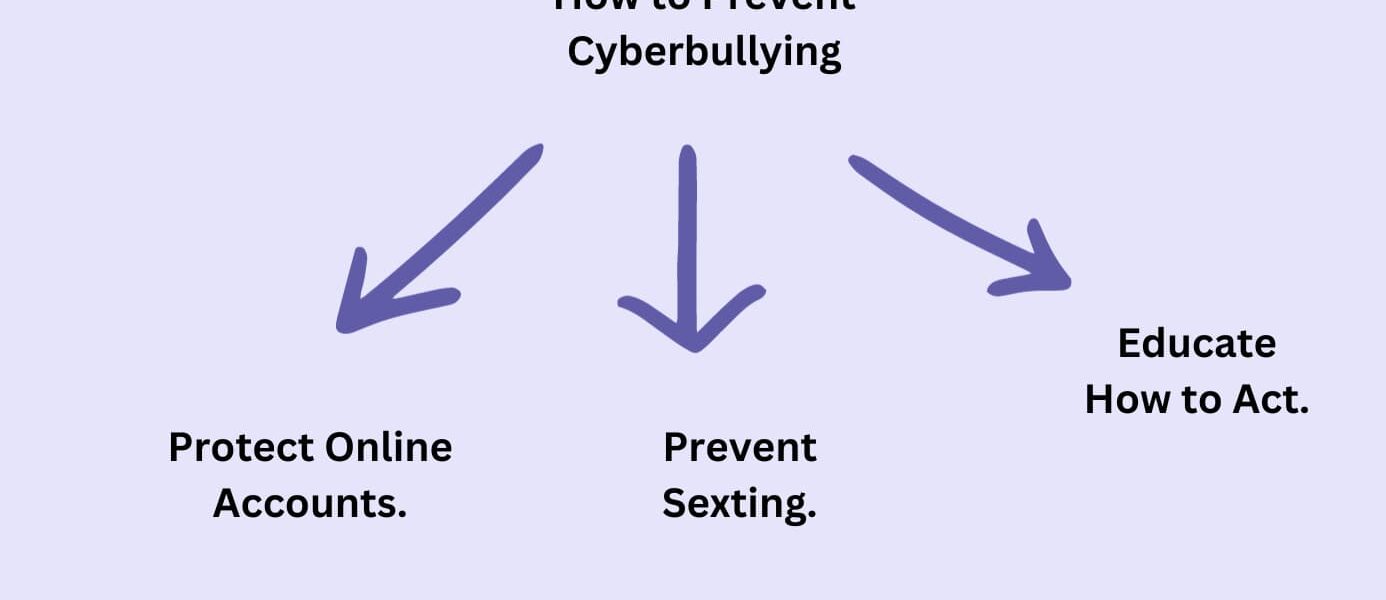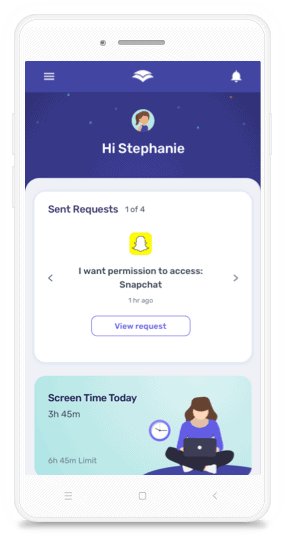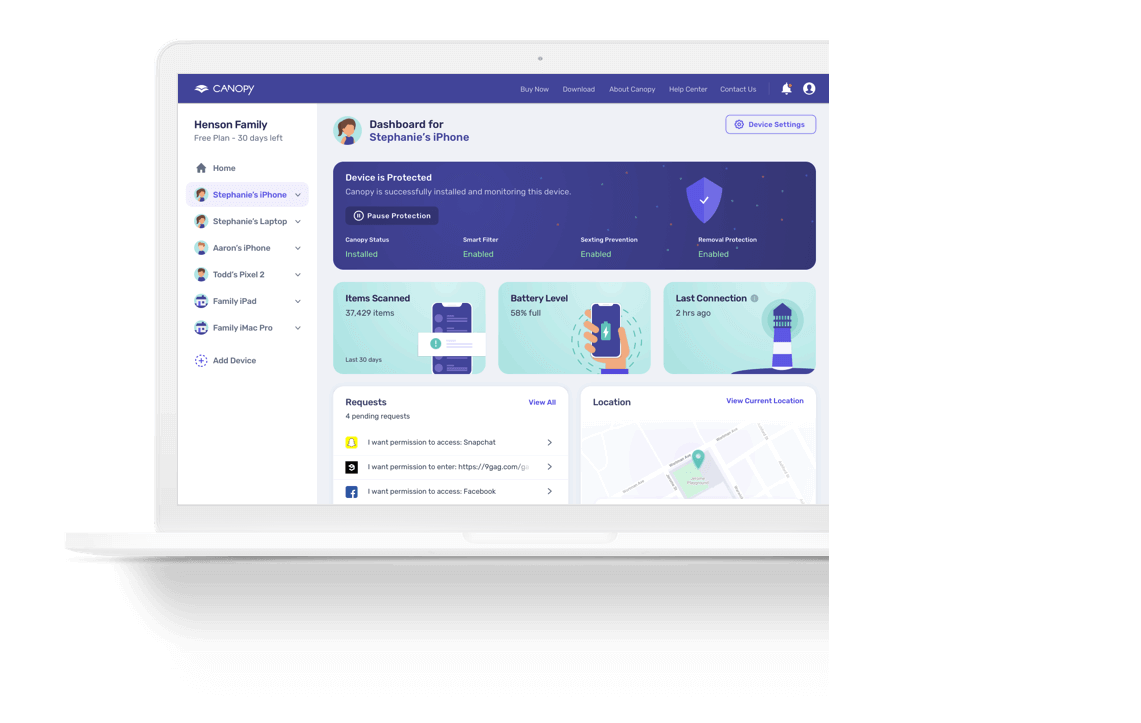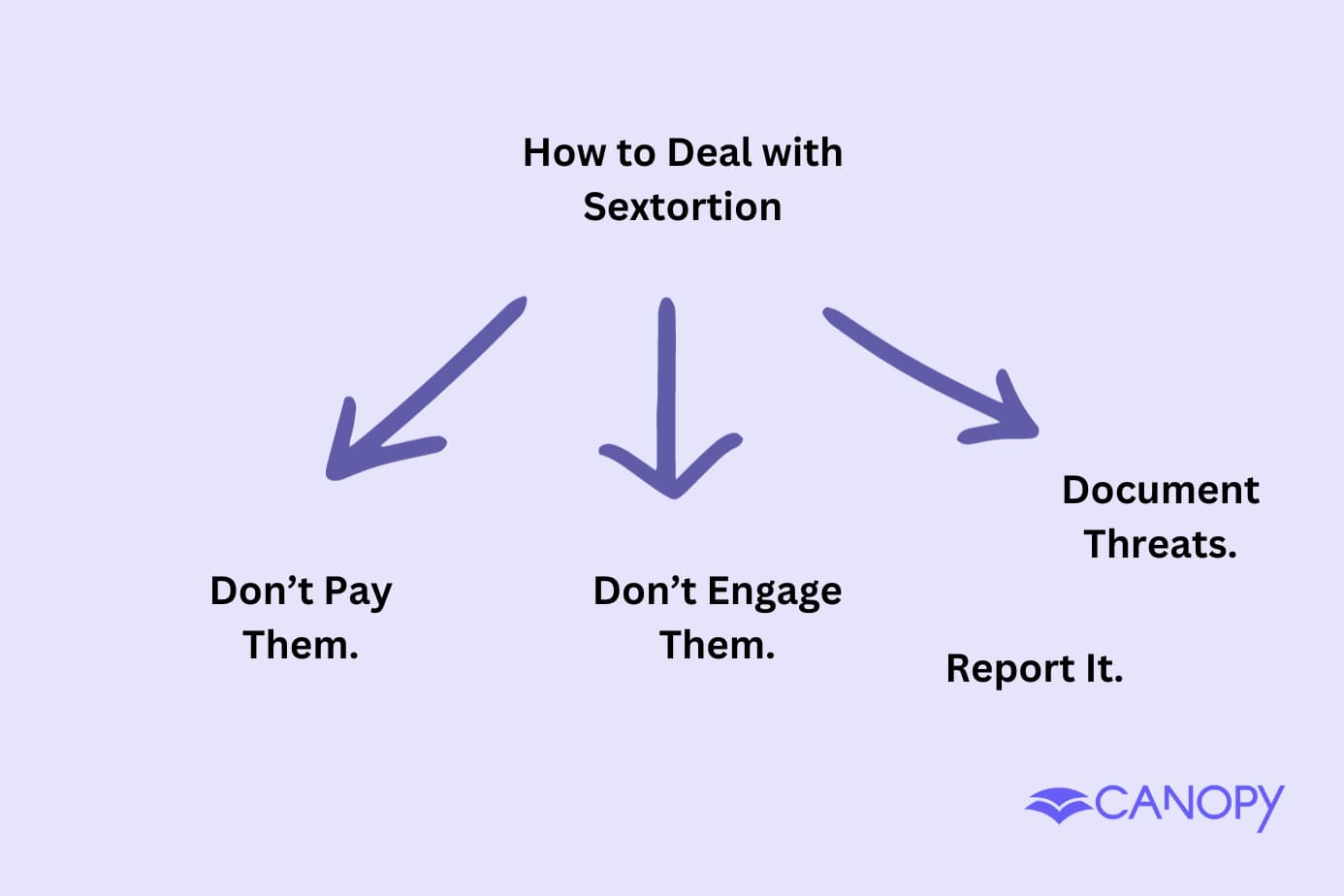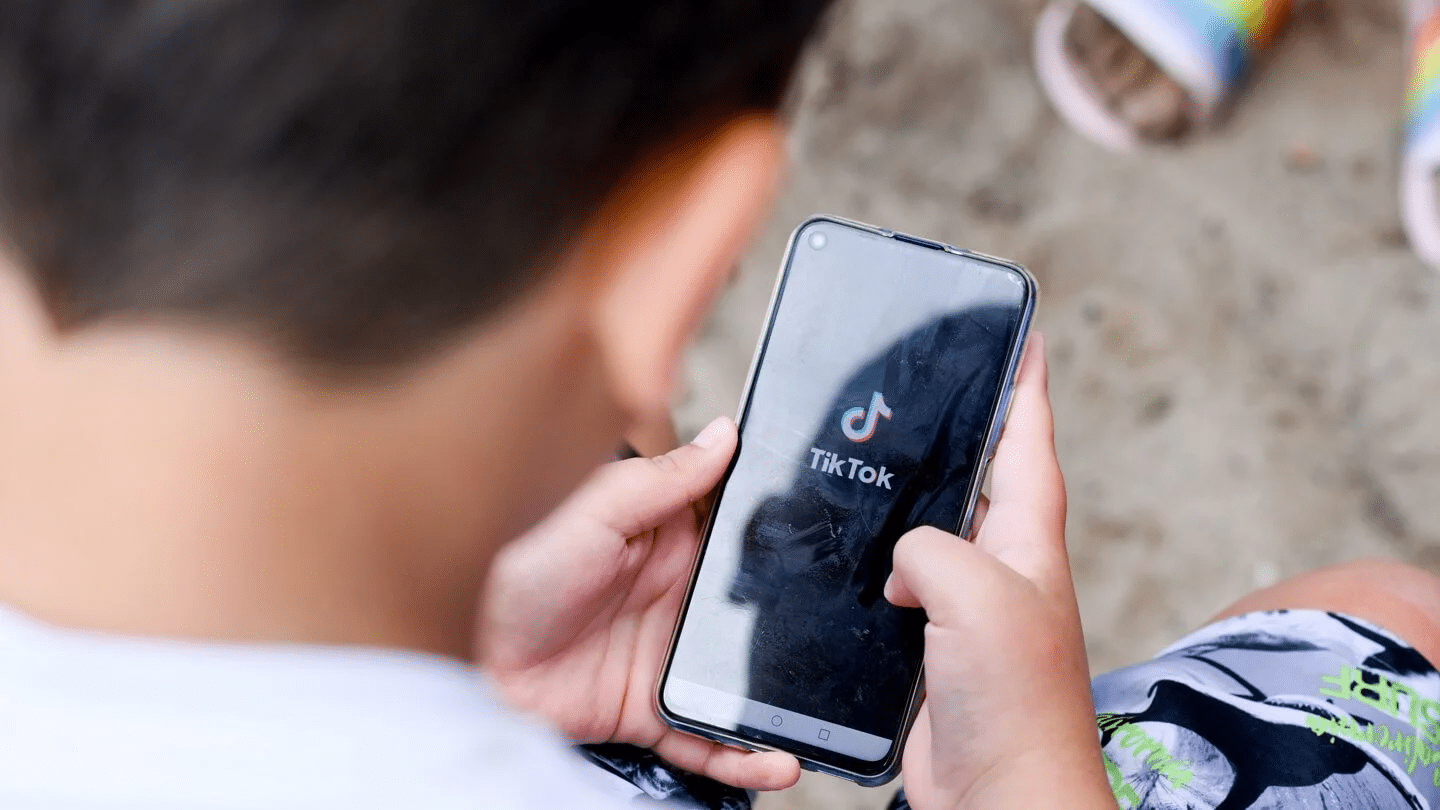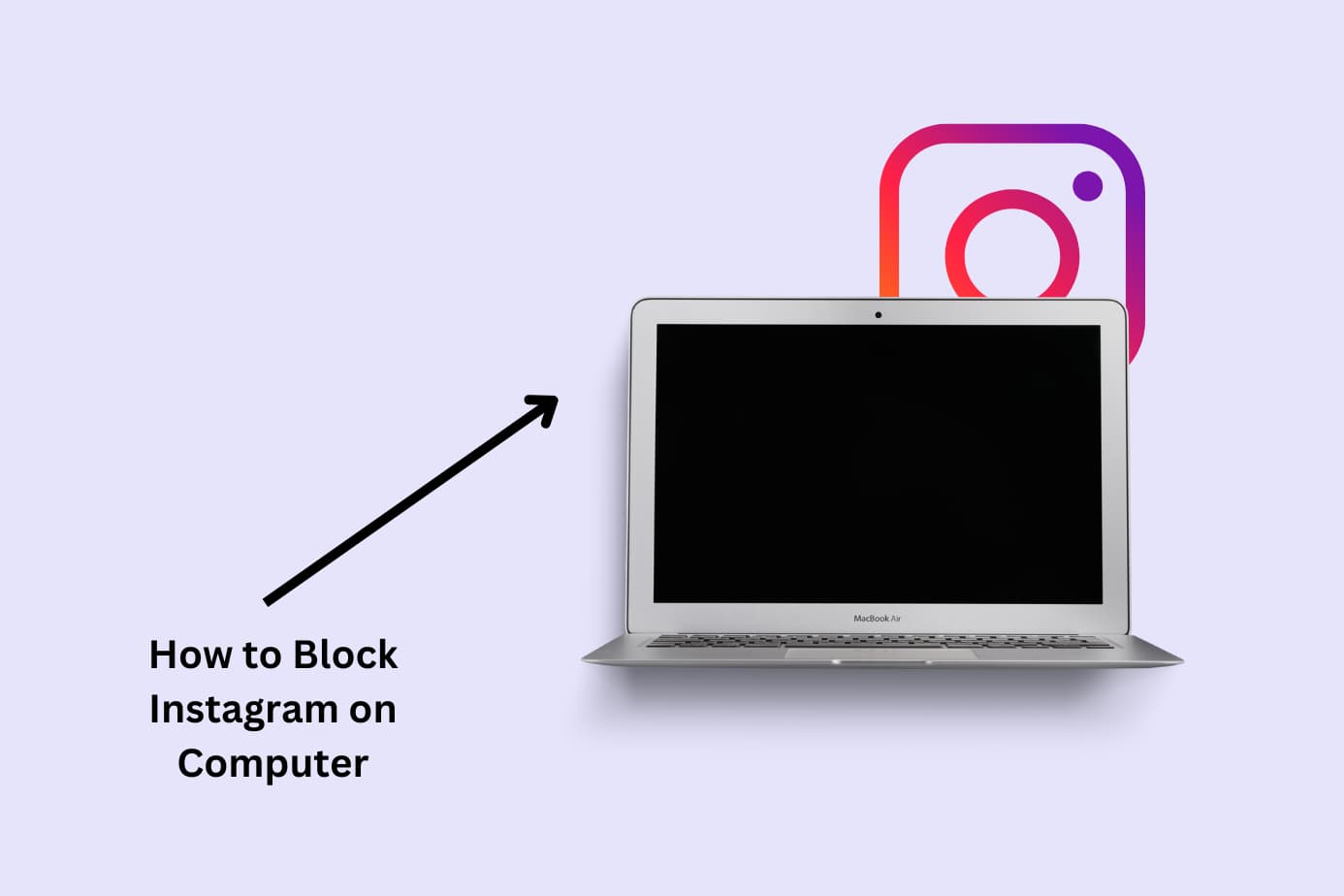Think back to the school bullies you may have encountered—name-calling, public embarrassment, and harassment in hallways. Now, imagine those same bullies could follow you home, show up on your phone, or humiliate you in front of your friends online. That’s what cyberbullying feels like—and for today’s kids, it’s far more invasive and damaging.
Unlike traditional bullying, cyberbullying follows children everywhere—into their bedrooms, during family time, even while doing homework. With just a few clicks, bullies can spread rumors, share manipulated photos, or launch relentless attacks on social media.
So, how can cyberbullying be prevented?
In this guide, you’ll discover 11 practical ways to stop cyberbullying, including changing privacy settings, using parental control tools, and opening up honest conversations at home. Whether you’re trying to prevent issues before they happen or looking for ways to respond, these strategies will help.
Key takeaways:
Victims of cyberbullying often don’t tell parents—making prevention even more important. That’s why it helps to use a reliable parental control app to monitor and guide your child’s online activity.
Adjusting online privacy settings can block cyberbullies from contacting your child.
Tools like Canopy help prevent activities that can lead to cyberbullying, including sexting and inappropriate social media use — and it can also block videos on YouTube to reduce exposure to harmful content.
Learning how to avoid inappropriate content online is a critical part of cyberbullying prevention.
Why Cyberbullying Prevention is Important Right Now

Bullying doesn’t look like it once did.
Instead of on the playground it happens online. Or worse, it happens both online and in-person, leaving your child with no escape from the torment.
Cyberbullying is any action online that is meant to cause harm to another — and some of it begins when kids don’t know how to block apps on iPhone or limit screen time settings. Common examples are threatening or cruel texts, hurtful messages and posts on social media, accounts dedicated to mocking people, revenge porn, and name calling on gaming platforms. Cyberbullies can be someone your child knows or a complete stranger.
And thanks to the prevalence of social media and the ever expanding tech landscape, the problem has grown to concerning levels.
A 2018 Pew Research study reported 59% of teens said they’d been a victim of cyberbullying. The type of bullying ranged from name-calling to having explicit images of them shared without their consent — a serious risk if they don’t know how to talk to your child about inappropriate pictures.
You can see the breakdown of cyberbullying and prevalence in the graph below:
Yet children who are victims rarely tell their parents. As little as 1 in 10 teen victims will inform a parent or trusted adult of their abuse.
What’s really concerning is that there are now AI tools online that can generate false images — another reason to detox your child from screen time and reduce their exposure to risky platforms. Bullies and sextortionists can take a completely innocent photo of your child and turn it into something explicit.
It’s already happening. A town in Spain has seen this happen to teenage girls between the ages of 12 and 17. One or multiple people have used innocent photos of them from social media to create fake nude photos which have been posted online and distributed to others.
|
What are the effects of cyberbullying? It’s not uncommon that their fear and stress from being a victim translates to emotional, physical, and academic struggles.
Academic evidence shows the impact ranges from poor sleep to self harm and even suicide.
For almost every parent we talk to at Canopy, cyberbullying is an alarming reality, often leading them to seek out mental health activities for kids to rebuild confidence and emotional safety. It’s normal for you to be worried about the experiences your child may face online.
Thankfully, there are things you can do to prevent cyberbullying and we’ll make sure you know what they are.
11 Ways to Prevent Cyberbullying
Below, you’ll find 11 different ways to prevent cyberbullying. Combine them all and you’ll have a sturdy defense against anyone wishing your child harm online.
1. Know where cyberbullying happens and what kind
Cyberbullying isn’t random—it’s more likely to happen in specific digital environments. That’s why one of the best ways to prevent cyberbullying is understanding where it’s most common.
Social media platforms like Facebook, Instagram, and TikTok are hotspots for online harassment. Bullies often target peers using messaging, tagging, and content sharing tools.
In a January 2021 survey, 75% of U.S. victims reported being cyberbullied via Facebook. Instagram and Twitter followed, and bullying on TikTok continues to rise. This makes social media parental controls essential.
So, what can you do to prevent cyberbullying from happening to you or your child?
Stay informed. Ask your child which platforms they use and how they interact with others online. The more you know, the better you can set filters, block harmful platforms, and apply the right parental control app.
2. Talk to your child about social media responsibility
One of the most powerful ways to stop cyberbullying is to help kids use social media responsibly.
Blocking access to social platforms like Instagram or TikTok entirely is an option. With Canopy, you can block or restrict access and adjust those settings over time. This makes it easier to avoid inappropriate content online, one of the key triggers for cyberbullying.
If your child does use social media, educate them on what’s safe to post and who it’s safe to talk to. Explain that once something is online, it’s hard to take back—and that private details like school names or locations can be used for text monitoring or targeted harassment.
It’s also vital to tell them how to stop cyberbullying if it happens. Make sure they feel safe reporting issues and understand that you’re there to support them.
For more tips, read our online safety tips for parents to set up protections that actually work.
3. Regularly check in on their social media
By keeping tabs on your child’s social media activity and the activity of others in their social circles you might be able to spot if they’re being targeted by cyberbullies.
We don’t mean spy or invade their privacy. Your child should know that you’re checking in on them.
Here are some red flags to look out for:
- An influx of negative comments on their account
- Inappropriate content that they’re being tagged in
- Fake profiles using your child’s identity
- Posts or stories spreading false information or rumors about your child
- Private messages that contain threats or mean-spirited language
Regularly checking for these signs and discussing any concerns with your child can help in early detection and prevention of cyberbullying.
Practically, you can set aside a weekly or bi-weekly “digital check-in” time with your child. Use this time to go through their accounts together, discuss any concerns, and reinforce the importance of internet safety tips for parents.
4. Protect their online accounts
Ensuring your child’s online accounts are secure is a fundamental step in preventing cyberbullying.
A compromised account can lead to personal information leaks, unauthorized posts, or even direct harassment from hackers.
Here’s how you can bolster the protection of their accounts:
- Use strong passwords with complex combinations of numbers, symbols, and letters
- Activate two-factor authentication where available
- Ensure that the answers to security questions aren’t easily accessible or guessable
- Be cautious about linking multiple platforms together. If one gets compromised, it can lead to a domino effect on others.
- Teach your child to recognize and avoid suspicious emails or messages that ask for personal information or direct them to dubious links.
- Periodically check and clean up app permissions, especially on platforms with less robust iOS parental controls, to minimize vulnerabilities.
5. Set up privacy settings on their social media accounts and devices
Privacy settings play a pivotal role in determining who can view your child’s online content, who can interact with them, and what data third-party apps can access.
Properly configuring these settings can significantly reduce the risk of cyberbullying.
Here’s how to go about it:
- Set platforms like Facebook, Instagram, and TikTok to ‘private’. This means only approved followers or friends can view posts and personal details.
- Adjust settings to only allow friend or follower requests from mutual friends or contacts.
- Set up approvals for tagging. This means your child can review and approve any post or photo they’re tagged in before it appears on their profile.
- Review which apps have access to cameras, microphones, and location services.
- Turn off location sharing on social media posts and check-ins.
- Set Direct Messaging to ‘friends only’ or disable it if not necessary—this is often recommended in discord parental controls.
6. Prevent your child from sexting or taking inappropriate photos of them or others
The consequences of sharing inappropriate photos can be long-lasting and damaging.
Sexting, or the act of sending sexually explicit messages or images, can lead to cyberbullying, blackmail, and even legal repercussions. If you’re unsure what to do if your child sends inappropriate pictures, this guide can help.
Underage children who send explicit photos are technically engaging in child pornography and once the photo is sent they lose control over what happens to it.
It can be shared, distributed, and even misused without their knowledge or consent.
Prevention is three-fold. Make sure your child understands the consequences of sexting. Equip them with the confidence to resist peer pressure. And use a parental control app like Canopy.
Canopy has a sexting prevention feature. If your child takes or receives an explicit photo, the app will alert you to the incident.
This allows you to protect them without going through their phone regularly and compromising their privacy.
7. Turn off location sharing
Cyberbullying, at its core, seeks to inflict emotional distress. However, when a bully knows the exact location of your child, it adds another layer of intimidation.
The mere hint or threat of physical danger can amplify the mental anguish experienced by the victim. Imagine the fear a child might feel if a bully were to say, “I know where you are right now.”
Plus, you never know how far a cyberbully is willing to go and their digital torment could become physical.
To mitigate this risk, it’s crucial to turn off location sharing on your child’s devices and social media platforms, especially in apps like Peacock parental controls that offer location-based features. Dive into the settings of each app they use, especially those that have geotagging or “check-in” features, and disable location services.
On a broader scale, consider adjusting the location settings on their phone or tablet to limit which apps can access this data — a simple step supported by tools like the best screen time control app.
8. Teach your child not to engage with cyberbullies
One of the most effective strategies to disarm a cyberbully is surprisingly simple: don’t engage.
It can prevent cyberbullying from escalating or continuing.
That’s because cyberbullies, much like traditional bullies, thrive on reactions. They seek to provoke, to get a response, and to know that their hurtful words or actions have had an impact.
“I was cyberbullied when I was younger. I wish someone had told me then to not engage, don’t respond or feed them, don’t show them you care. That’s how they get bored and move on.”—Ben Johnson, Content Marketer at Eton Venture Services.
When your child responds, even defensively, it gives the bully exactly what they want: power and validation.
It’s this power that fuels their actions, reinforcing their behavior and often escalating the situation.
Teach your child the importance of not feeding into this cycle. Instead of retaliating or defending themselves, they should take a step back, document the interaction for evidence, and report it to the necessary authorities or platform administrators — this is also a good time to review your child’s access to apps like Snapchat via Snapchat parental controls.
And of course, encourage them to confide in you or another trusted adult about the situation, so they don’t feel isolated or alone.
9. Report cyberbullying when you or your child see it (even if not the victim)
Cyberbullying is a collective issue, and addressing it requires a community effort.
While it’s essential to protect your child from online harassment, it’s equally crucial to take a stand against all forms of cyberbullying, even if your child isn’t the direct victim.
When you or your child come across instances of cyberbullying, take immediate action by reporting it.
Most social media platforms and online communities have mechanisms in place to report abusive behavior.
By flagging these incidents, you alert the platform to take necessary actions, which could range from issuing warnings to suspending or banning the offender.
But why report if your child isn’t the one being targeted?
Because today’s bystander can be tomorrow’s victim. By taking a proactive stance, you contribute to creating a safer online environment for everyone — and that includes checking your child’s device settings with tools like Windows 10 parental controls for full-device security.
10. Make sure your child isn’t cyberbullying
Kids can easily get swept up in the moment and go along with the crowd. Before they know it, they’re the cyberbully.
They might see forwarding on that picture as harmless teasing or feel pressured by others to poke fun but our kids need to understand that on the other side of the screen is a real person with real feelings.
What might seem like a light-hearted joke to one person could be deeply hurtful to another.
Encourage them to put themselves in the other person’s shoes and to think before they post or comment.
If you discover that your child has been involved in cyberbullying, approach the situation with understanding and empathy.
Instead of reprimanding them immediately, seek to understand the context and their perspective.
Use it as a teachable moment, emphasizing the importance of kindness, respect, and the lasting impact of their online actions — conversations like these also tie into why parents should limit screen time.
11. Install a parental control app (Canopy)
A large part of cyberbullying prevention involves monitoring and limiting your child’s presence online, teaching them better habits, and preventing them from inappropriate activities like sexting.
With the right tool, this can be made easier.
Canopy is a parental control app designed to protect your child from online dangers including cyberbullying without being invasive into their private life.
Here’s how:
Sexting Prevention: Canopy’s advanced algorithms can detect and block inappropriate images in real time, ensuring that explicit content doesn’t reach or originate from your child’s device.
Content Filtering: The app filters out harmful content, ensuring your child only accesses age-appropriate material. Canopy’s Porn Blocker reduces the chances of them encountering cyberbullying or other harmful content.
Screen-Time Management: By setting limits on screen time, you can ensure your child takes regular breaks from the online world, reducing prolonged exposure to potential threats.
App and Website Blocking: You can block apps or websites notorious for cyberbullying incidents. By restricting access to these platforms, you directly reduce your child’s risk of encountering or participating in online harassment.
→ Protect your child from cyberbullies and other online threats with Canopy. It comes with a free 7 day trial and works across all devices. ←
How to Spot if Your Child is the Victim of Cyberbullying
Even with the strategies to prevent cyberbullying in place, your child may already or could one day become the target of a cyberbully attack.
So how do you spot if your child is a victim of a cyberbully?
Look for changes in their behavior. They might become withdrawn, lose interest in activities they once loved, or show signs of anxiety and depression.
Monitor their online activity for any signs of negative interactions, and keep an open line of communication, encouraging them to share their feelings and experiences.
By staying vigilant and approachable, you can identify the signs early and take the necessary steps to support and protect your child.
FAQs
What can you do to prevent cyberbullying from happening to you?
To prevent cyberbullying, start by strengthening your privacy settings on all social media accounts. Don’t accept friend requests from strangers and avoid sharing personal details online. Use strong passwords and keep them private. Most importantly, report any suspicious or harmful behavior immediately.
How can cyberbullying be prevented at school and at home?
Cyberbullying can be prevented by combining education with the right tools. Schools should teach digital citizenship and responsible online behavior. At home, parents can use parental control apps like Canopy and have open conversations with their kids about online safety and respectful communication.
What are effective ways to stop cyberbullying once it starts?
One of the best ways to stop cyberbullying is to block the bully and report the incident to the platform where it occurred. Save evidence like screenshots and avoid retaliating. Parents or guardians should also consider involving school officials or legal authorities if the bullying escalates.
How to avoid inappropriate content online that might lead to cyberbullying?
Avoiding inappropriate content online starts with using filtered search engines and enabling content restrictions on devices. Apps like Canopy can automatically detect and block harmful content, preventing situations that might make children vulnerable to cyberbullying or exploitation.
Why is cyberbullying prevention important in today’s digital world?
Cyberbullying prevention is crucial because online harassment can seriously impact a child’s mental health and self-esteem. With kids spending more time online than ever, proactive steps like monitoring screen time, using safety tools, and educating them about online risks are more important than ever.
